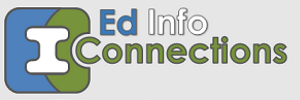Big data is a new term that can imply both new forms data and new analytic techniques. While big data is routine for many businesses and some sciences, it is new to education. Two characteristics of big data (in addition to lots of data) are that different kinds of information – some more structured than others – are used together and that the data focus is developing deep understandings of systems and context rather than only on outcomes. Organizations that leverage big data are often able to understand those they serve, and their environment better; to isolate and focus on their external and internal challenges and monitor their efforts. In American education, there is hope that big data tools can be a lever for change. And, some foundational infrastructures capable of providing high-quality data for analyses are emerging in both state education departments and cyber-infrastructures and digital tools that cross geographies. As these technologies become viable, new questions emerge about what measurement means in the context of a big data paradigm.
Using this term with education can be intriguing and confusing. Despite the potential for deep insights into organizational practice and personalizing learning, the path is not clear. Translating the concept of big data into education entails dealing with data originating and representing complex cognitive/social/political conditions. This symposium highlights unique characteristics of educational data so that the field will better understand what big data means (or could mean) as education matures in its use of information.
While education has long had large datasets, the last decade has been one of dramatic progress. State longitudinal data systems (SLDSs) have emerged throughout the nation. These SLDSs connect student information over time and frequently connect information about teachers, programs, and resources. They cross traditional boundaries of K-12 education, early childhood, post-secondary, and health and human services and are involved with some of the important policy questions of the day, including evaluations of teachers based on student test scores. In recent years the exponential growth of digital media has brought new forms of data about students, what they search for, and how/when they use different technologies – often in great detail. These new data streams can help develop rich portraits and insights about learners, their interests, and capabilities. Five national perspectives –educational data mining, growth and challenges of building statewide data systems, new information about learning coming from digital tools, and privacy and governance issues – help frame emerging policy questions about how to best use and combine different forms of information.
I have organized a symposium for the National Council on Measurement in Education (NCME) around this concept and also have proposed a session for the American Educational Research Association (AERA) on this topic. The NCME session focuses on the role of measurement in a big data paradigm and the AERA one on policy considerations.
NCME Panel
- Philip Piety, Author: Big Data in the Educational Data Movement
- John Behrens, Vice President for Digital Experience and Analytics at Pearson: Digital Directions and New Forms of Assessment
- Marcia Linn, Professor of Education, UC Berkeley: Interpreting Student Progress from Embedded Assessments
- Gerald Tindal, Castle-McIntosh-Knight Professor of Education, University of Oregon: Special Education and State Datasets
- Ed Dieterle, Senior Program Officer at the Bill and Melinda Gates Foundation: Open Educational Resources and Activity Data
- Jack Buckley, Commissioner, National Center for Educational Statistics: Big Data at the Federal level

Leave a Reply